Whiteness and other folk remedies against fungus on walls
If for some reason the use of fungicides (special means for combating mold) is impossible, it is worth trying proven traditional approaches. White against fungus on walls has been used for a long time and has managed to prove itself only from the best side. However, when using the product, you must remember that you not only need to get rid of mold, but also not harm the people living in the apartment. In addition to a chlorine-containing solution, you can use other folk remedies at home, which are no less effective.
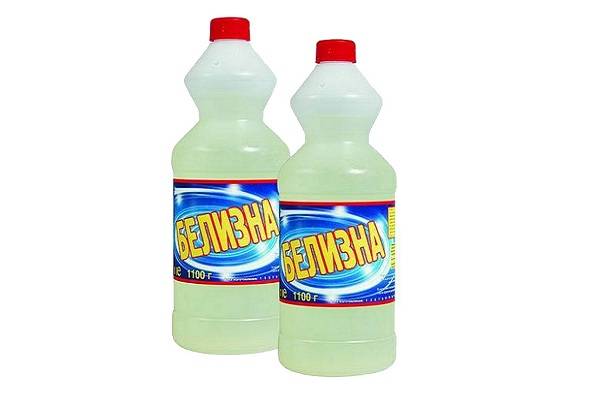
Rules for using Whiteness
When declaring war on mold, it is necessary to first determine the cause of its occurrence. If you simply get rid of traces of fungal parasitism through regular cleaning, this will not give the desired result. Even the most effective means, whose action is directed against the active reproduction of a specific microorganism, are temporary. Only after it becomes clear why multi-colored colonies appear on the walls, and appropriate preventive measures have been taken, can we begin to eliminate traces of mold and the results of its vital activity.
If fungal colonies cover only small areas and have not yet had time to affect the quality of plaster, wallpaper and other raw materials, we proceed according to the following scheme:
- Apply Whiteness directly to the affected areas.This can be done with a brush, sponge, or spray bottle. There is no need to dilute the composition first; a concentrated product will give the best effect.
Tip: If you have to deal with colored wallpaper, it is better to first check how Whiteness will affect their color. In general, chlorine bleach is best used for treating plaster, tiles, wood and stone surfaces. For fabric and paper, it is better to choose something less aggressive.
- We leave the areas treated on the walls to dry on their own, without using a hairdryer or other sources of artificial heat to speed up the process.
- As the bleach dries, the mold spots will lighten and then disappear completely, but this does not mean that the fight against fungal colonies is complete.
- Next, we take a thick brush and begin to mechanically treat the affected areas until we can get rid of the slightest trace of the parasite.
It is worth considering that Whiteness for disinfection has a pungent odor and is aggressive towards surrounding objects. Therefore, it is recommended to carry out the procedure for removing mold on walls, ceilings and furniture in conditions of good ventilation and only with rubber gloves.
Features of treatment of serious lesions
If the situation is such that you not only have to deal with traces of mold on the walls, but the material has lost its original texture and is crumbling, then the approach should be more radical:
- Contaminated materials (plaster, paint, wallpaper, whitewash) must be removed to a clean layer. We not only treat areas with traces of fungus, but also go a little deeper into the clean product.
- Next, thoroughly dry the problem area.To do this, it is best to use heaters with an open spiral, which burn oxygen and reduce the level of air humidity.
- Apply an anti-mold composition to the prepared surface. This can be a folk remedy, but it is better to use an industrial fungicide, which can be found in many hardware stores.
- At the next stage, dry the treated areas again. In this case, the product used to combat mold does not need to be washed off; it should just remain on the walls and be well absorbed.
- After the treatment is completed, we begin to restore the attractiveness of the walls. If whitewash, putty or paint is used, you can add a little disinfectant to the composition, this will ensure reliable prevention of the return of mold.
Approximately the same actions are shown when working with wood. True, here with cleaning the surface the situation will be more complicated. If you do not cut off the affected areas, the problem will soon return.
Other effective folk remedies to combat mold
If it is not possible to use Whiteness or a ready-made solution to eliminate fungus, you can consider one of the following options:
- Copper sulfate. For 10 liters of water, take 100 g of copper sulfate and prepare a solution. We treat the surfaces with the resulting composition, just like with chlorine bleach. It is worth considering that this option can leave stains on the walls, so it is best to use it before carrying out cosmetic repairs.
- Vinegar. Hard surfaces (stone, tiles) can be treated with a solution of undiluted table vinegar. You just need to remember that this product begins to smell even stronger if it is heated.Therefore, it is not recommended to dry walls treated with the composition using artificial heat sources.
- Soda with washing powder. This mixture will get rid of mold in the spaces between the tiles. Add a tablespoon of baking soda and 2.5 tablespoons of regular washing powder to a glass of hot water. We take a brush, dip it in the composition and thoroughly clean all problem areas. After this, there is no need to rinse off the product, the main thing is to dry the room well.
If superficial or deep treatment did not give very pronounced positive results, this indicates the penetration of mold into the structure of the material. Only cosmetic repairs will help here, implying a complete replacement of the wall covering.
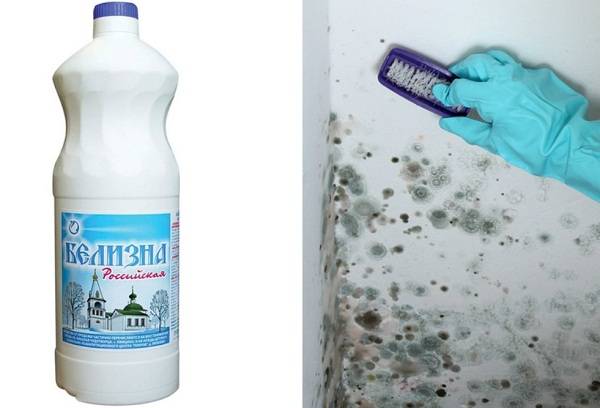
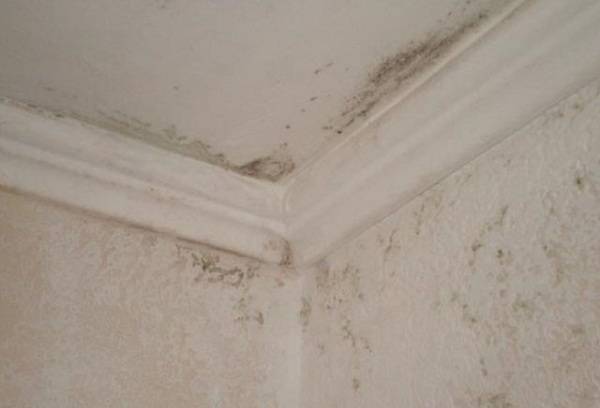
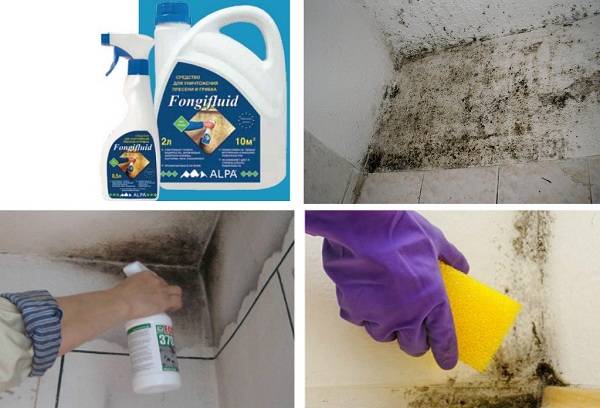
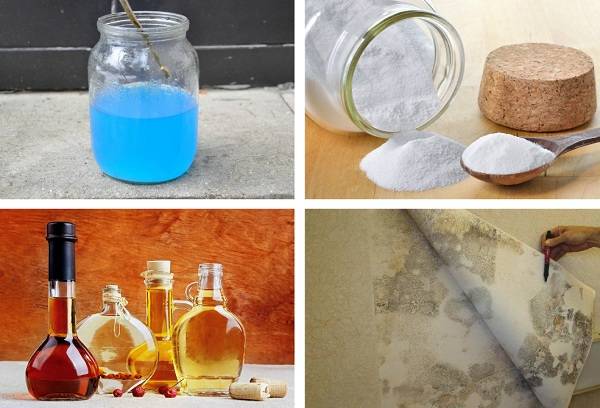
Thank you. This information was useful)))
Thank you! Great article. No textual water, everything is clear.